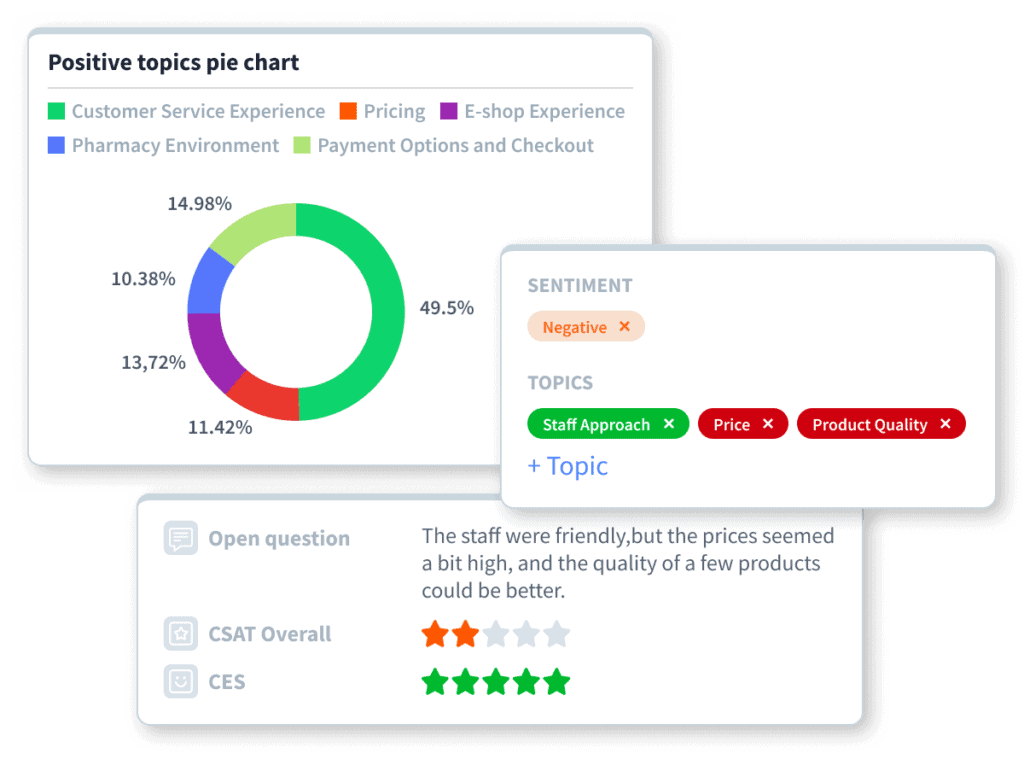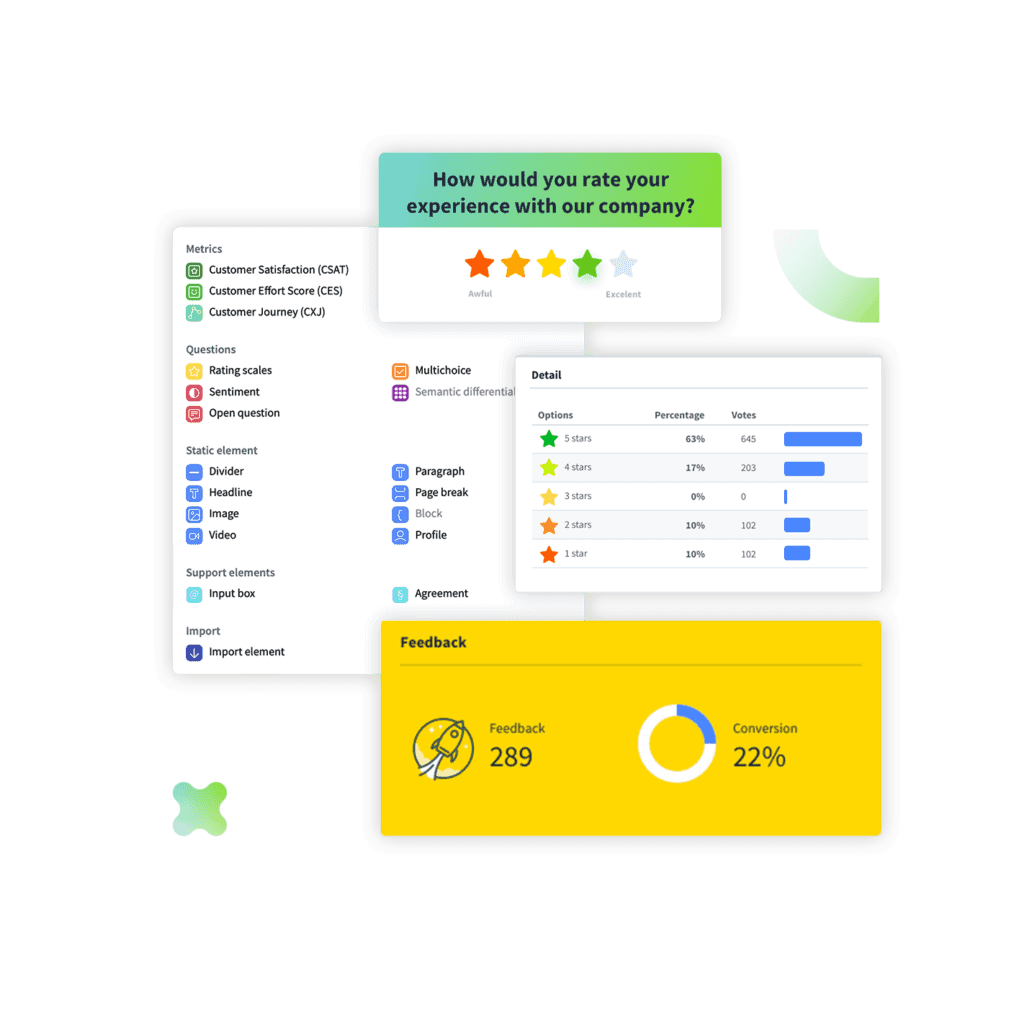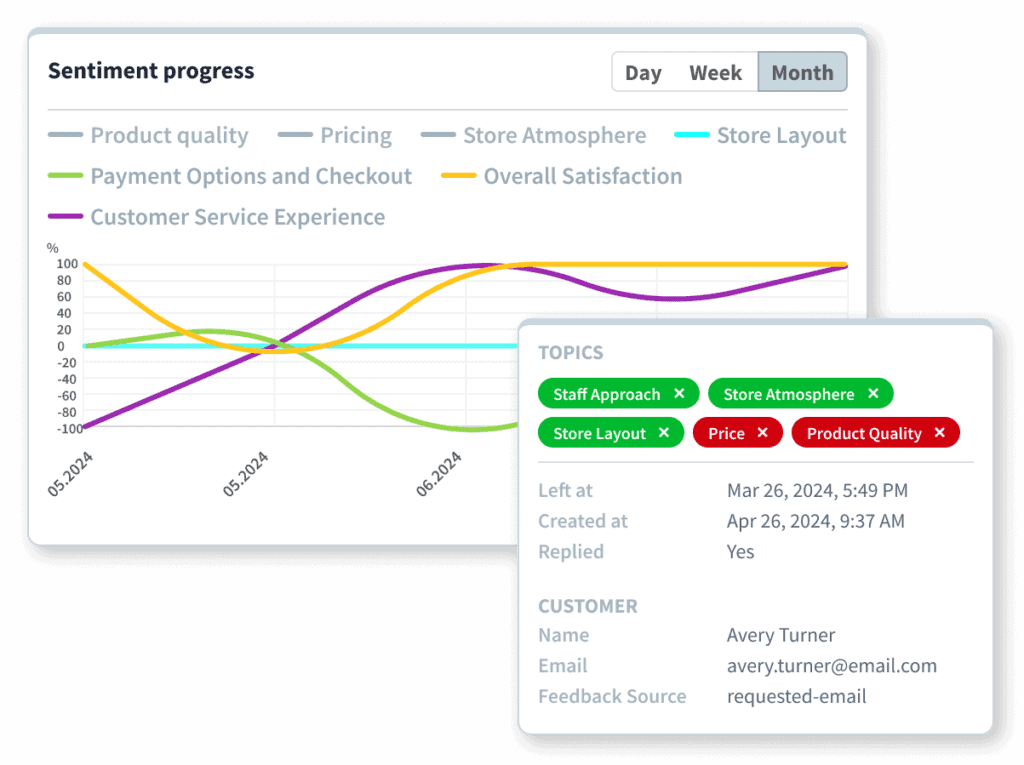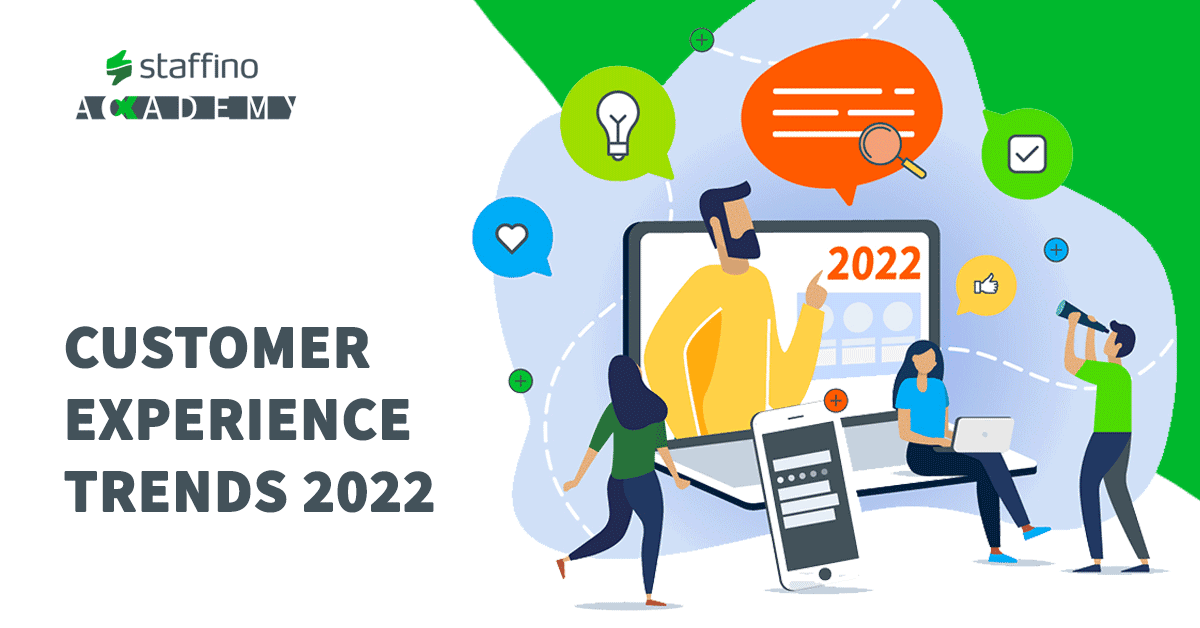Customer perception is more than just a passing impression—it’s the core of a brand’s reputation and success. In today’s fast-paced, competitive market, understanding and shaping customer perception can be the deciding factor between brand loyalty and lost business.
What is the customer perception and why is it important? In this article, we’ll dive into the customer perception definition, why it matters, and how brands can actively improve it. From leveraging AI for CX to enhancing employee recognition, we’ll explore practical strategies that can help businesses build a positive, lasting impression that keeps customers coming back.

What Is Customer Perception?
Customer perception definition is as follows: Customer perception refers to how customers view and interpret a brand, its products, services, and overall reputation. It’s not just about what the company says but rather what the customer experiences and feels. This perception is built from a combination of factors, including personal experiences, word-of-mouth, advertising, and interactions with the company, both online and offline.
The unique thing about customer perception is that it’s subjective—two people can have entirely different views of the same brand. Positive perception typically results in loyalty, repeat purchases, and positive word-of-mouth, while negative perception can lead to customer churn and brand damage.
Why Is Customer Perception Important?
Customer perception shapes the foundation of customer relationships and directly impacts a business’s bottom line. Prioritising customer perception means actively managing how customers view your brand. It involves understanding their needs, anticipating pain points, and meeting their expectations. A strong, positive perception:
1. Builds Customer Loyalty
Customers who feel connected and valued are more likely to return and even pay premium prices.

2. Boosts Reputation
Satisfied customers become brand ambassadors, sharing positive experiences with their networks.
3. Influences Decision-Making
In an increasingly competitive market, perception can be the deciding factor when a customer chooses between two similar products or services.
Conversely, a negative perception can be hard to reverse and may result in reputational damage, reduced customer lifetime value, and the high costs associated with customer acquisition.

Retain Customers and Increase Profits!
Make sure your customer relationships don't slip away with Staffino's Retention Case Monitoring. This easy-to-use tool gives you the power to maximise customer retention and boost loyalty.
How Is Customer Perception Formed?
Customer perception is formed through a variety of interactions, both direct and indirect. Key factors include:
Personal Experiences
Each interaction with the brand—whether through customer service, product quality, or user experience—shapes perception. For instance, a delayed response from customer support may leave a lasting negative impression, while a quick resolution might turn a complaint into a success story. Find out how to respond to complaints effectively.

Advertising and Marketing
Branding messages, advertising campaigns, and promotional materials set expectations that customers hope are met during their interactions. Misaligned marketing (like over-promising features) can damage perception if the product doesn’t meet expectations.
Influence of Others
Word-of-mouth, online reviews, and social media posts contribute to customer perception. In today’s digital age, one customer’s review can reach thousands, affecting potential buyers’ perceptions.
Employee Actions
Employees are the face of a brand, especially in customer-facing roles. Employee recognition programs and rewards for exceptional service can significantly influence customer perception by motivating staff to deliver outstanding experiences.

How to Improve Customer Perception
Improving customer perception involves a multifaceted approach focused on meeting and exceeding customer expectations. Here are five strategies to consider:
a) Consistent Quality and Reliability
Consistency is key. Providing reliable products and services consistently reassures customers that they can depend on your brand. Regularly assessing and improving product quality based on customer feedback builds trust and strengthens perception.
b) Positive Employee Engagement and Recognition
Employees who feel valued are more motivated to provide exceptional service. Rewards and recognition encourage customer-facing employees to exceed customer expectations. Staffino, for example, has enabled companies to use gamified feedback systems to motivate employees, resulting in an improved customer experience by recognising top performers and encouraging a culture of excellence.
c) Leveraging AI for Customer Experience
Artificial intelligence is transforming how businesses manage and improve client experience. AI-powered tools can analyse customer feedback in real time, helping brands identify pain points quickly. For instance, AI-driven sentiment analysis can instantly detect shifts in customer sentiment, allowing businesses to address concerns before they escalate. Here are two examples of AI in CX:

- Predictive Analytics: AI can predict customer behaviours, such as churn risk, enabling proactive engagement.
- Automated Feedback Responses: AI can automatically process and respond to feedback, personalising communication and reducing response time. For instance, Dr. Max, a pharmacy chain, used Staffino’s AI response generator to reduce feedback processing costs by 600% while increasing customer engagement.
d) Active Feedback Loops
Encouraging and acting on customer feedback is essential. Closed-loop feedback, where the company responds directly to customer feedback, shows customers that their opinions matter.
This approach can turn negative experiences into positive ones, enhancing perception. Real-time dashboards or feedback analytics software can help monitor customer satisfaction metrics like NPS (Net Promoter Score) and CSAT (Customer Satisfaction Score).

e) Clear Communication and Transparency
Clear, honest communication can build customer trust. Whether it’s resolving an issue or managing expectations, transparent communication keeps customers informed and reduces frustration.
The Role of Employee Recognition in Shaping Perception
When employees feel recognised and motivated, they are more likely to deliver top-notch customer service. Here are a few employee recognition examples to inspire your strategy:
Employee of the month: A classic example of employee recognition is the ‘Employee of the Month’ program. This is where an employee is singled out for their exceptional performance and is publicly recognised for their efforts. This not only motivates the chosen employee but also inspires others to strive for the same recognition.

- Peer recognition: Another effective method of employee recognition is through peer recognition programs. Here, employees are given the power to acknowledge and appreciate the efforts of their peers. This fosters a sense of camaraderie and mutual respect among team members, boosting morale and productivity.
- Recognition through positive customer feedback: Staffino takes employee recognition to the next level by sharing positive customer feedback with the employees it pertains to in real time. This innovative method allows employees to see firsthand how their work positively impacts customer perception. This immediate and direct recognition not only boosts employee morale but also reinforces the importance of their role within the company.

Give Your Employees the Recognition and Motivation They Deserve
Does your team need a little extra motivation? Our platform provides powerful insights into your team’s performance and various recognition tools that help ensure everyone feels appreciated.
Integrating AI in the Customer Journey to Enhance Perception
AI can optimise various stages of the customer journey, leading to an improved perception of the brand. Examples include:
- AI in pre-purchase decisions: Personalised product recommendations based on browsing history enhance relevance and can improve customer satisfaction.
- AI in post-purchase support: AI-powered chatbots provide 24/7 assistance, helping customers resolve issues quickly without waiting for human agents.
- CX dashboards and predictive insights: AI customer experience dashboards provide real-time insights into customer sentiment and satisfaction, helping businesses adjust their strategies proactively to maintain positive perception.

How Staffino Helps Companies Improve Customer Perceptions
Improving customer perception is a continuous journey that requires the right tools to understand and respond to customer needs effectively. Staffino’s AI CX tools provide real-time feedback analysis, closed-loop feedback systems, and predictive insights that help brands monitor and improve customer perception.
By leveraging sentiment analysis, automated response systems, and gamified employee engagement programs, Staffino enables businesses to transform customer interactions into positive experiences, ultimately enhancing overall brand perception.
Final Word
Customer perception is a powerful force that shapes a brand’s reputation and impacts customer loyalty. By consistently delivering quality, actively recognising employees, and leveraging AI in customer experience management, companies can create a positive perception that drives business growth.

Get a First-Hand Experience Today!
Staffino is the perfect tool for creating engaging surveys, tracking performance, responding to customer feedback, and rewarding top employees. Get started today with our FREE demo!









